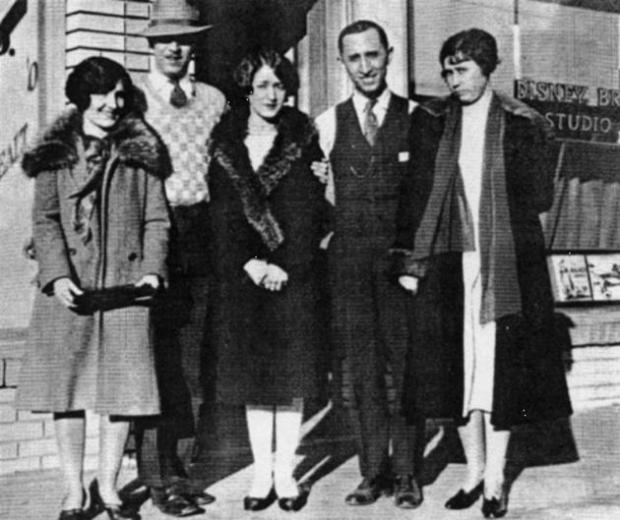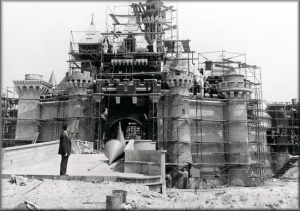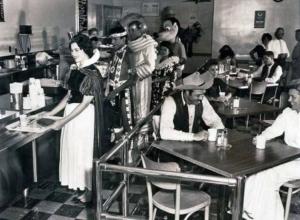Zachary Fisher was a tradesman, a builder. Over his lifetime, he and his extended family have built many prominent structures. If you are curious to know where they are, you can investigate their locations on the internet by looking up Zachary’s name.
However, from the perspective of Harmony Keys, Zachary Fisher did something far more important than constructing towers at prominent addresses. He was a man who built harmony in the lives of people. How did he do that? Zachary Fisher became dedicated to aiding the U.S. Armed Forces in a myriad of ways. One way was that he contributed millions from his own wealth to improve the lives of families whose loved ones have been injured or killed in the military service of our country.
Who was Zachary Fisher? Let’s start with his father, Karl Fisher, a stonemason. Karl emigrated from Lithuania to New York in the early 1900s and went to work in his trade. Zachary was born in Brooklyn in 1910. Very early in his life, Zachary, like all of his brothers, was trained by his father as a bricklayer. At age 16, Zachary left high school to work in construction. When WW II came along in 1941, he was rejected for service due to an injured leg. In lieu of service, he aided the war effort through his construction skills by building fortifications on the eastern coast. It was the beginning of his desire to aid the U.S. Armed Forces.
Over the years, Zachary had many projects to assist various parts our military, including the preservation of an historic aircraft carrier and the development of a naval museum. Those projects involving equipment and buildings were important, but Zachary seemed to yearn for a very personal, close focus on military men and women and their families. So in 1982, he and his wife, Elizabeth, founded the Zachary and Elizabeth M. Fisher Armed Services Foundation. Through the Foundation, Zachary contributed to the families of the victims of the Marine barracks bombing in Beirut in 1983. Since then, the Foundation has donated $25,000 to each of numerous military families who lost loved ones under tragic circumstances. The Foundation also provides scholarship funds to active and former service members and their families.
In 1990, a wonderful stroke of opportunity presented itself. Pauline Trost, wife of Chief of Naval Operations Admiral Carlisle Trost, spoke to Zachary and Elizabeth of the urgent need for temporary lodging for families at major military medical centers. Zachary and Elizabeth immediatelyformed the Fisher House Foundation and initiated the Fisher House program, dedicating over $20 million to the construction of a nationwide network of free, temporary, comfortable lodging units for families of hospitalized veterans and military personnel. One year later, in 1991, the first two Fisher Houses were built and ready to serve. The first was near the National Naval Medical Center in Bethesda; the second was near Walter Reed Army Medical Center in Washington, DC. Today there are more than 60 units operating across America and one in the United Kingdom.
We had never heard of Fisher Houses and wanted to know more so we studied an interview with one of Zachary’s grand nephews, Ken Fisher and Ken’s wife,Tammy, which was conducted by Philanthropy Magazine in Fall 2010. The following notes are based on that interview and on the Fisher House Foundation website. The story is thrilling.

Learning to Climb Again
Picture this: The Fisher House Foundation builds multi-unit residential properties within walking distance of major military and V.A. medical centers. Each unit has between 6 and 21 suites and can host 12 to 42 family members at one time. Each incorporates kitchen, laundry, recreation, and library space. Books and toys are provided. Once the units are completed, they are turned over to the government. When a service member or a veteran is hospitalized, his or her family can live at the house, free of charge, for as long as they need to stay, close to their service member or vet during recuperation.
Since inception, Fisher House Foundation has provided approximately 5 million nights of free lodging with home-away-from-home comfort, giving military families time to heal. And the program is growing exponentially.
A striking fact about the outreach established by Zachary Fisher is that it seems non-partisan. His generosity, and the grassroots philanthropy of his family, have been applauded and recognized over and over by leaders of many administrations: Gerald Ford, Jimmy Carter, Ronald Reagan, George Bush, as well as Margaret Thatcher and the late Yitzhak Rabin. In 1998, Zachary received the Presidential Medal of Freedom from Bill Clinton in honor of his wide-ranging contributions on behalf of the young men and women in the US Armed Forces. In 2010, Barak Obama announced the proceeds from his children’s book “Of Thee I Sing” would benefit Fisher House Foundation’s “Heroes’ Legacy Scholarships” for the sons and daughters of fallen/disabled service members.
Without a doubt, Zachary Fisher was a man who built more than buildings. He created harmony among human beings.
We signed up to receive the Fisher House Foundation newsletter. If you would like to learn more about Fisher outreach and how you can help, contact Fisher House™ Foundation, Inc., 111 Rockville Pike, Suite 420, Rockville, MD 20850, (888) 294-8560, http://www.fisherhouse.org




























Written
on June 19, 2014